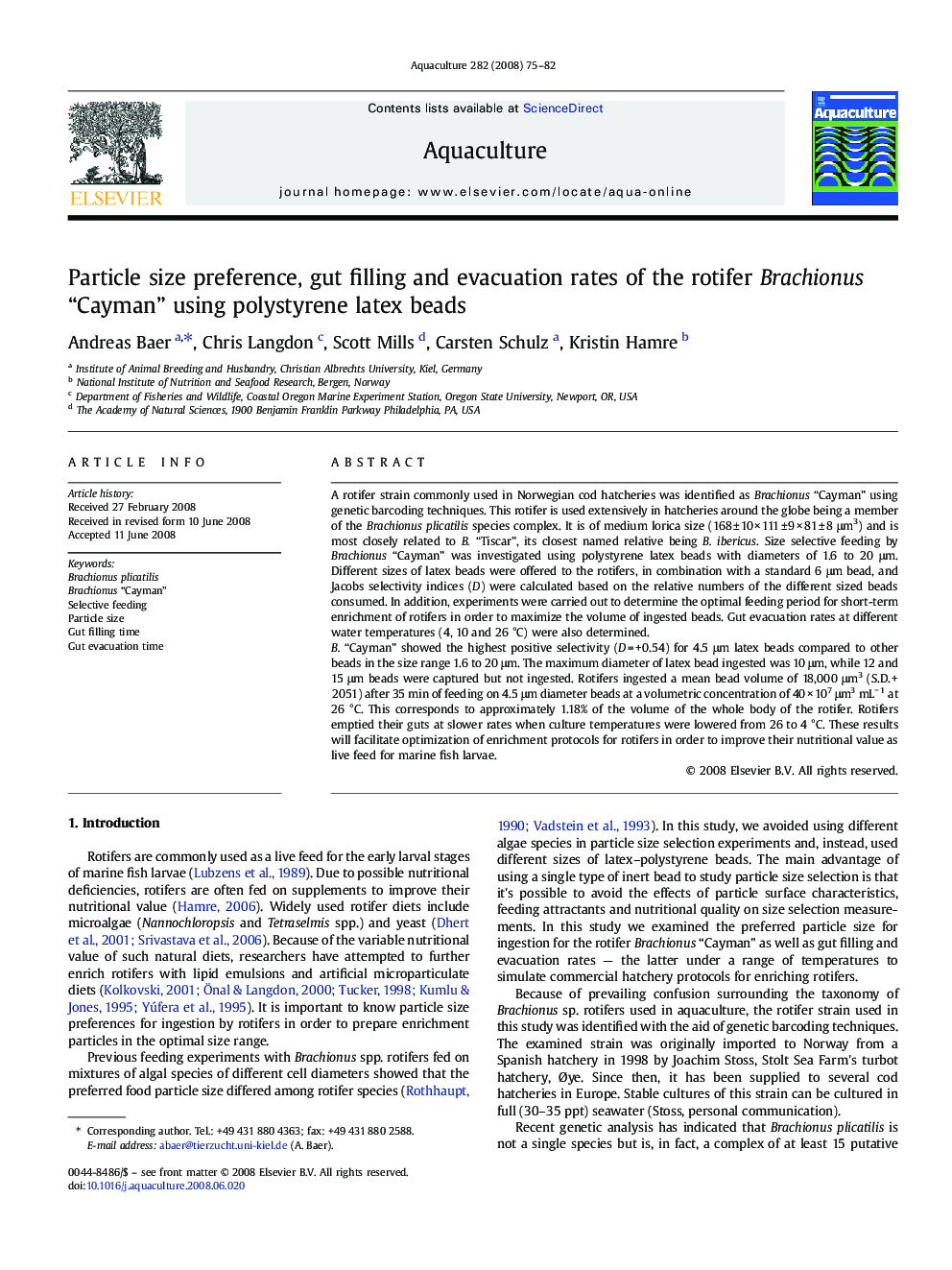| کد مقاله | کد نشریه | سال انتشار | مقاله انگلیسی | نسخه تمام متن |
|---|---|---|---|---|
| 2424567 | 1552959 | 2008 | 8 صفحه PDF | دانلود رایگان |

A rotifer strain commonly used in Norwegian cod hatcheries was identified as Brachionus “Cayman” using genetic barcoding techniques. This rotifer is used extensively in hatcheries around the globe being a member of the Brachionus plicatilis species complex. It is of medium lorica size (168 ± 10 × 111 ± 9 × 81 ± 8 μm3) and is most closely related to B. “Tiscar”, its closest named relative being B. ibericus. Size selective feeding by Brachionus “Cayman” was investigated using polystyrene latex beads with diameters of 1.6 to 20 μm. Different sizes of latex beads were offered to the rotifers, in combination with a standard 6 μm bead, and Jacobs selectivity indices (D) were calculated based on the relative numbers of the different sized beads consumed. In addition, experiments were carried out to determine the optimal feeding period for short-term enrichment of rotifers in order to maximize the volume of ingested beads. Gut evacuation rates at different water temperatures (4, 10 and 26 °C) were also determined.B. “Cayman” showed the highest positive selectivity (D = + 0.54) for 4.5 μm latex beads compared to other beads in the size range 1.6 to 20 μm. The maximum diameter of latex bead ingested was 10 μm, while 12 and 15 μm beads were captured but not ingested. Rotifers ingested a mean bead volume of 18,000 μm3 (S.D. + 2051) after 35 min of feeding on 4.5 μm diameter beads at a volumetric concentration of 40 × 107 μm3 mL− 1 at 26 °C. This corresponds to approximately 1.18% of the volume of the whole body of the rotifer. Rotifers emptied their guts at slower rates when culture temperatures were lowered from 26 to 4 °C. These results will facilitate optimization of enrichment protocols for rotifers in order to improve their nutritional value as live feed for marine fish larvae.
Journal: Aquaculture - Volume 282, Issues 1–4, 30 September 2008, Pages 75–82